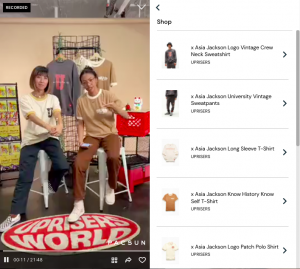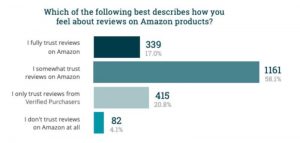
Because this period of having no voice has dragged on 30 times longer than anyone expected, I’ve had to make changes to the way I work.
Along the way I’ve been re-discovering the written word. And in my desire to bring you the best teaching, I’ve been tempted to leave out the personal bits. Tempted, but obviously not compelled.
So let’s get to it. Today I have something I hope will convince you to re-think the way you communicate online. In fact, if you take this to heart, it could revolutionize your business. I’m not kidding.
First, know this:
It’s not about features and benefits
Proposition: In the online universe, the only feature/benefit that means anything is having the right message at the right time in the right place.
The reason is simple. The webiverse is still at a remove from real life. So you have an obligation to create intimacy. This requires translating how you intuitively react in a face-to-face encounter into something that can be perceived at a distance.
And the only way to do this is to understand exactly what’s going though your reader’s mind at any given time. I don’t do this perfectly. I don’t think anyone does. But the closer you get to this ideal, the better off you’ll be.
Get a perfectly timed message right and it calms a prospect’s jangly nerves, quells their suspicion that you’re less trustworthy than a TV talking head whipping up a war-du-jour, and can actually make them look forward to your next communication.
A nd it only has to do two things
nd it only has to do two things
1. Demonstrate that you know what they’re thinking.
2. Reassure that this is the precise step they need at this time.
The magic of “At This Time”
It will do you no good to take this step out of sequence. That will destroy trust forever. Like the online marketer who doesn’t shut off the sales message to the person who’s already bought, communications sent at the wrong time can be disastrous.
Let’s look at an example. Selling a seminar program using video
A potential client spots a YouTube video and beats it back to the video owner’s website to find out more about how to meditate their way back to health.
But the site is about vitamin supplements. An almost perfect mismatch between message and viewer.
BAM! A sale lost forever and he never knows why.
But let’s say he got in his Way Back Machine and decided to get focused on the meditation business after all, because he really likes that YouTube video.
So here comes the visitor again
Now she encounters a site that talks about those things mentioned in the video. So far so good.
Hey, look. This site has a free 3-step forgiveness meditation on offer. Sounds good. She signs up and gets taken right back to the home page.
 Oops
Oops
The visitor was expecting a meditation and got put into an endless loop instead. If she tries to sign up again thinking that this had to be a mistake, she will get sent right back to the home page.
She is completely helpless now. All she can do is wait and hope against hope that this idiot will deliver what she said she would. So if it isn’t already in her inbox, what is she feeling about now?
BAM
Another sale lost, even if she did eventually get the goodie. Because trust has been eroded and there is no way to make up for that first impression.
Do you see how all of this represents the triumph of form over function? It’s all about anticipation of what your viewer is going through. We haven’t even gotten to your delivery of benefits. And this site owner is unlikely to ever get there at this rate.
So let’s give him one more break
Another Way Back Machine trip and now he has wisely included a thank you page that his new subscriber automatically gets taken to after filling out that subscription form.
 But not just any thank you page
But not just any thank you page
It tells his new subscriber three important things. It tells her exactly when the meditation will be arriving, exactly what she needs to do to access it, and perhaps most importantly, how to get help if it doesn’t show up in her inbox in the next 15 minutes.
Remember, all this time his new subscriber has been holding her breath. Only now does she exhale for the first time in several minutes. She’s been worried that this online scammer is out to rip her off. And now comes this lovely page that seems to be echoing her thoughts and giving her clear, simple directions on how to take the next step.
Maybe the best word for this is responsive
So why not extend that same responsiveness when it comes to your videos?
Because the truth is, no matter how good they are, if they can’t be accessed on a desktop, laptop, tablet, or cellphone, with each screen offering the same experience, all you’ve done is find yet another way to lose a customer.
But making your video conform to the size of the screen and to the website which itself should be breaking down in its own responsive way; that’s really tricky. And if you have a Flash-based video player, it can’t be done. (Evidently.)
Instead, you see only half the player on the screen and it might even overlap the writing on the website itself.
Frankly, it can look a mess. And this is not uncommon.
It’s a whole new world in video today. When I started posting videos online, no one was trying to watch them from their phones. Tablets hadn’t been invented.
And then the world changed overnight
(Thanks again, Steve Jobs.) The industry leading video player I was using turned out not to be not responsive. And in a world where Flash video was flash crashing, they seemed not inclined to rewrite their code. How could they? They had built on someone else’s from the start.
So here’s the rub. Today the solutions that allow you to make your videos responsive also require you to upload your videos to their hosting sites. Then they use their algorithms to make the videos responsive. But some even require you to know HTML to make it work! Unbelievable.
And that’s a pretty pricey semi-solution
So yes, we do it differently. The Yuvid player makes your video show correctly on whatever screen you’re looking at, and in a way that looks right on the website where it’s embedded. And it’s all done at the player level, so you can still host your videos wherever you like.
But we went even further. In addition to the fact that this can all happen automatically, we included a set of expert controls to give our more experienced users the power to set limits on how large or small the videos will look on any screen.
Here’s the simple takeaway
It’s not features and benefits people will remember. They won’t hardly even remember you. But they just might remember that when they visited your site, things happened the way they were supposed to happen. And when that happens, good things happen to you.
Yuvid itself is a great reminder that good things happen to those who are responsive.
So even if you aren’t making videos right now, you soon will be, and this player won’t be the steal it is forever…at least not at the rate it’s being adopted.
Next time, we’ll go deeper into the mystery of responsiveness and the magic of the dynamic response video.
(172)
Report Post







